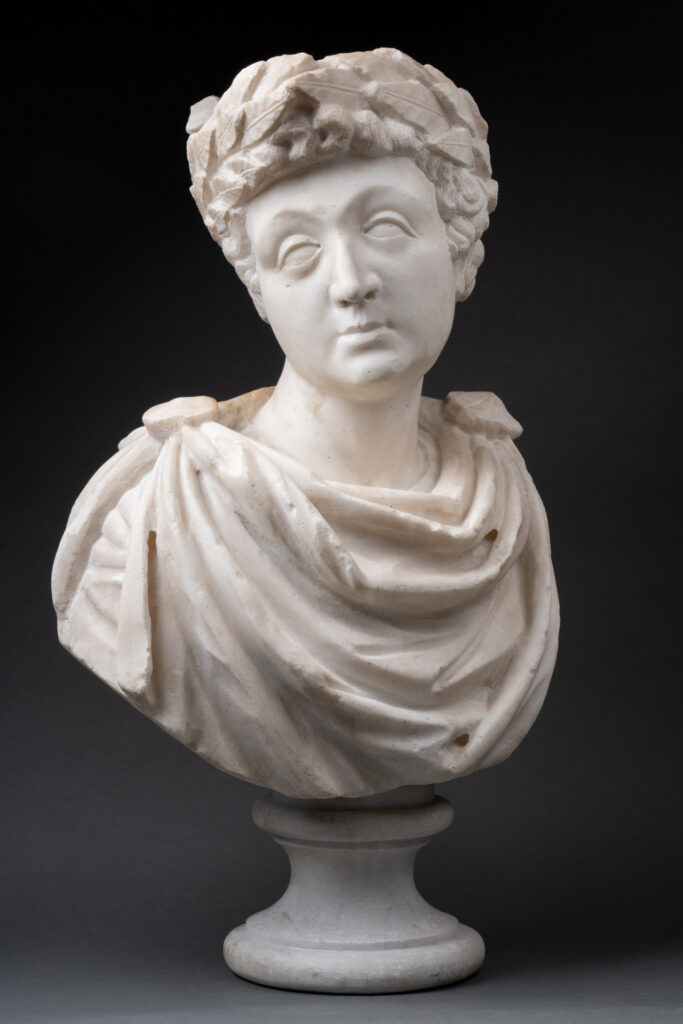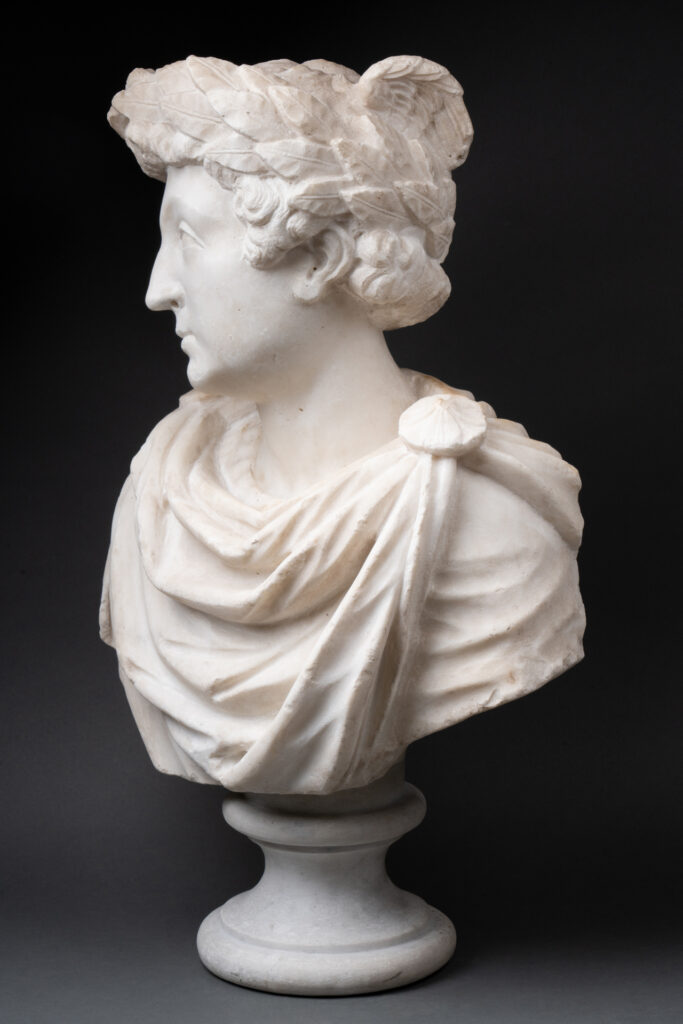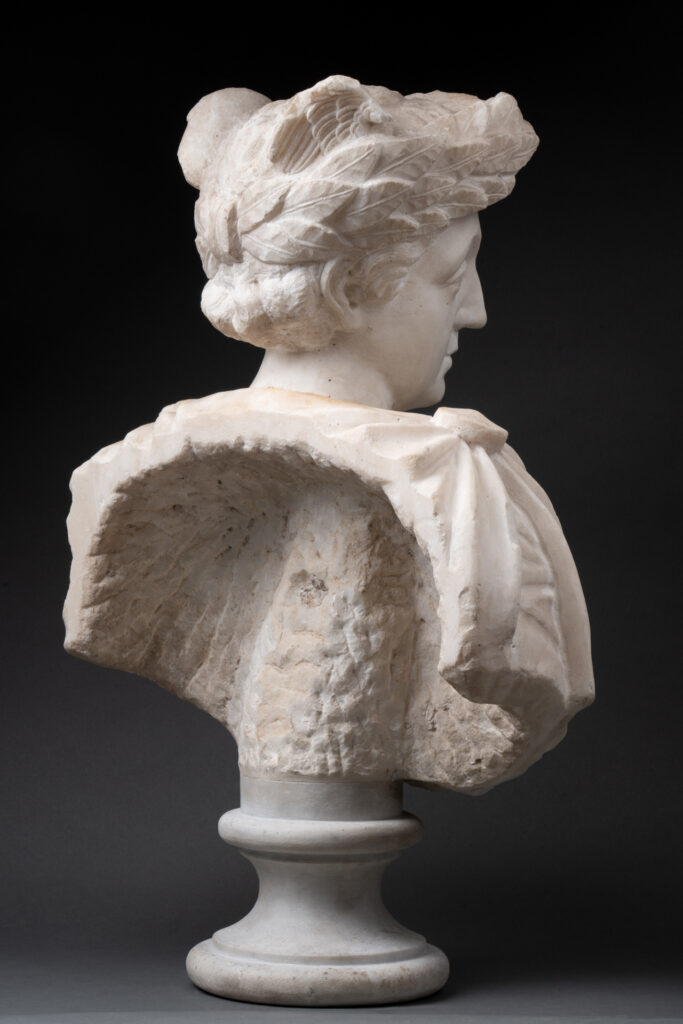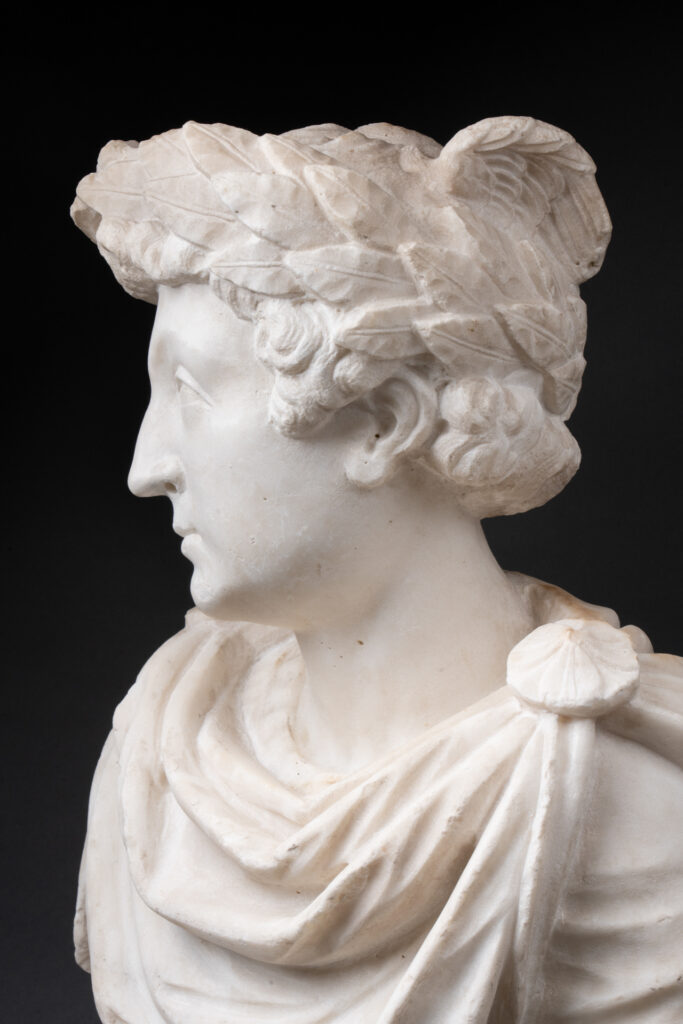This magnificent marble bust, represents the god Hermes (in Greek), Mercury (in Roman) from ¾ face.
Hermes, son of Zeus and the nymph Maia, is the patron god of merchants and travelers, acting as a liaison between men and the gods as “messenger from Olympus”. In the Odyssey, Homer transcribed a conversation between Hermes and Zeus: “Hermes, since it is you who always carries our messages, convey to the Loop our irrevocable decree.”
This god can be recognized by his many attributes, such as his winged sandals, the wand he uses to charm men, and his winged helmet. It is this last symbol that allows us to affirm that our work represents Hermes.
This sculpture shows him as a handsome young man with the attributes befitting an emperor of that era: laurel wreath, chlamydia held in place by a round fibula (military cloak stapled to the shoulder)… He is triumphant, yet his face remains peaceful. The work is remarkably chiseled, as can be seen in the curly ephebe hair and the laurel wreath held back by a knotted fabric.
Her eyes are almond-shaped, dropping slightly to her temples, and her mouth is thin and closed. Eye work is typical of Northern Italy.
He has two wings at the top of his head, enabling him to move quickly from one place to another to help travelers and merchants.
The bust is hollowed out at the back, as was customary at the time, allowing us to see traces of tools which, among other things, attest to its age. To make the folds of his chlamydia more realistic, the artist used the technique of the trepan, a kind of drill bit operated by hand with a bow. This tool has been used since Antiquity to reach recesses, clear parts that are difficult to access and rough out small diameter grooves by forming cylindrical cavities. Slow but precise, the drill bit is intended for very fragile places and hard materials such as wood, stone and marble. The trephine technique brings movement and depth to the whole.
The base of this work is not the original, but the color, leaning more towards gray, contrasts with the bust and thus highlights the artist’s work. This bust belongs to Giovanni Carati and his workshop. This Venetian sculptor worked in the second half of the 17th century and his style, particularly in the facial features, is similar to our work. Research available on request.
This god was widely represented between Antiquity and the Renaissance. His relationship, closer to man than some other gods, makes him more accessible. The god’s benevolent values make him a topos that has stood the test of time and is still relevant today.




